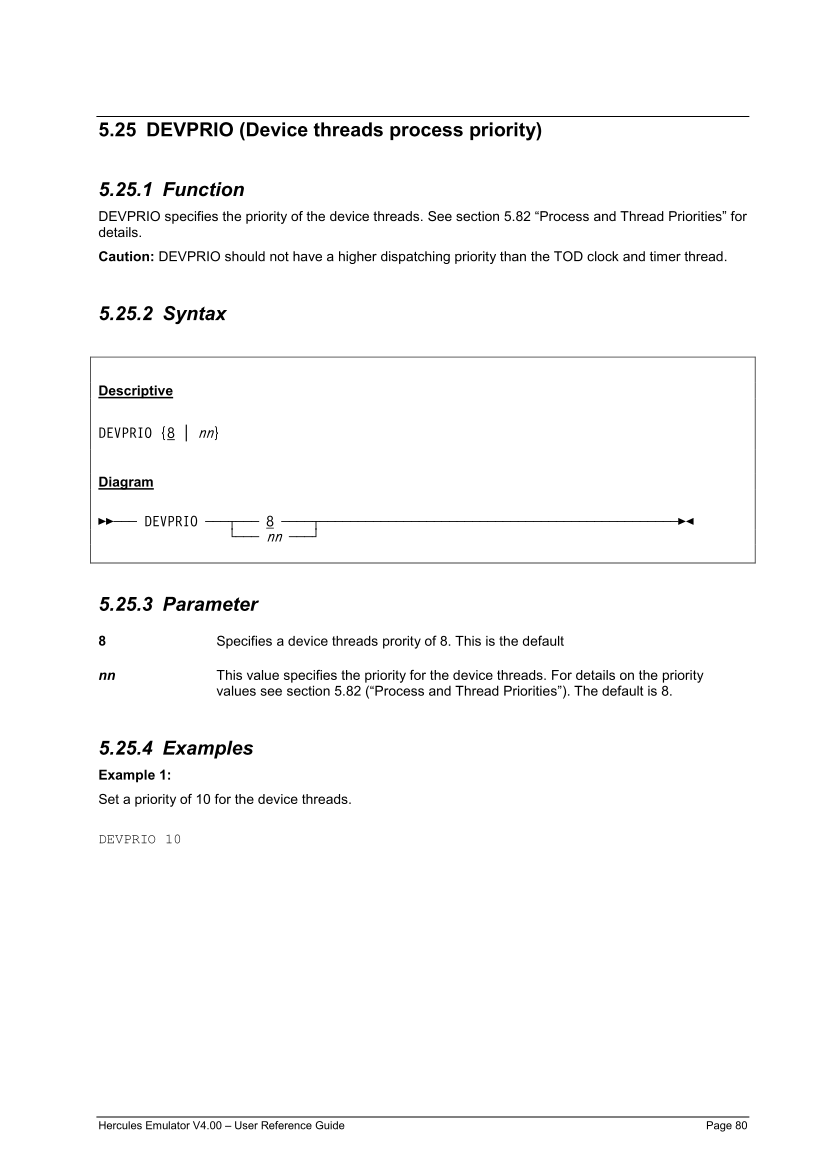5.25 DEVPRIO (Device threads process priority)
5.25.1 Function
DEVPRIO specifies the priority of the device threads. See section
details.
Caution: DEVPRIO should not have a higher dispatching priority than the TOD clock and timer thread.
5.25.2 Syntax
Descriptive
nn
Diagram
¬¬¬¬§¬¬¬¬¬¬¬¬¬¬¬¬¬¬¬¬¬¬¬¬¬¬¬¬¬¬¬¬¬¬¬¬¬¬¬¬¬¬¬¬¬¬¬¬¬¬¬ÊÍ
nn
5.25.3 Parameter
8
Specifies a device threads prority of 8. This is the default
nn
This value specifies the priority for the device threads. For details on the priority
values see section
5.25.4 Examples
Example 1:
Set a priority of 10 for the device threads.
DEVPRIO 10






















































































































































































































































































































































































































































































































































































































































































